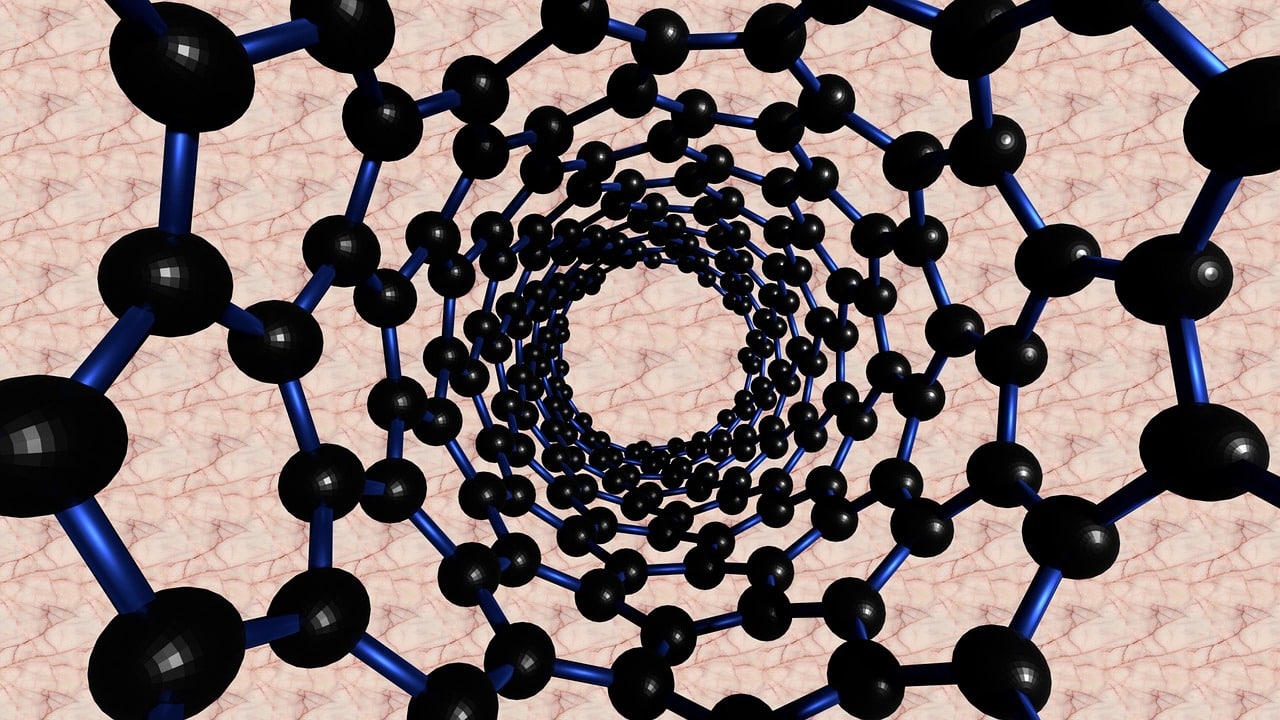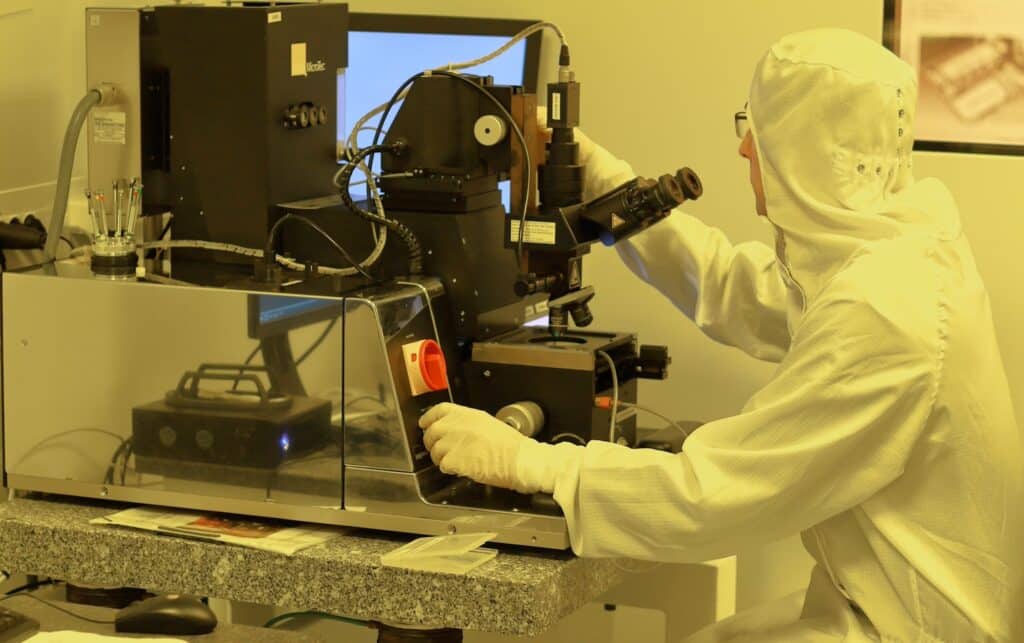A definition of nanotechnology
Nanotechnology is the science of the future that is already shaping our present. Let's explore in detail the opportunities of this revolutionary field.

Nanotechnology is often described as the science of the future for it is radically transforming the industrial landscape. This microscopic approach is not only revolutionizing research, but also all its practical applications in numerous industrial sectors. Discover how the science of the infinitely small is opening up unsuspected horizons in many fields, from medicine to energy and the environment.
What is nanotechnology?
Definition and origin of nanotechnology
Nanotechnology is a term derived from the Greek "nano" meaning "very small". It is a discipline that operates on an almost inconceivable scale: the nanometer, or one billionth of a meter. It concerns the study, design, creation and use of structures, devices and systems by manipulating atoms and molecules on a nanometric scale.
Nanotechnology may seem like a futuristic science, but it's actually rooted in a rich past. Indeed, nanotechnology has its roots in the work of visionary 20th-century scientists who sought to understand and manipulate matter at the atomic scale.
These pioneers laid the foundations for what we know today as nanotechnology. This discipline is paving the way for unprecedented innovations that are shaping many fields, from medicine and electronics to energy and materials.
An infinitesimal scale
Nanotechnology plunges into the universe of the minuscule, operating on the scale of the nanometer, an almost unthinkable microscopic dimension equivalent to one billionth of a meter. On this infinitesimal scale, the conventional laws of physics and chemistry are often turned upside down.
Nanomaterials thus reveal astonishing physical and chemical properties, which can differ radically from those observed on a macroscopic scale. This singularity offers unprecedented opportunities, opening the door to revolutionary innovations and applications in a wide range of scientific and industrial fields.
Atomic manipulation
At the heart of nanotechnology lies the feat of atomic manipulation. This extremely precise technique makes it possible to arrange, assemble and deconstruct matter, atom by atom.
A striking example is the creation of carbon nanotubes, where carbon atoms are arranged in tiny cylinders, possessing exceptional electrical and mechanical properties. This mastery at the most elementary scale opens up unprecedented horizons for innovation.
Thanks to this atomic modeling capability, pioneering structures and devices are being created, pushing back the boundaries of what science and technology can achieve.
Potential and industrial applications of nanotechnology
The science of the infinitely small is shaping the future of industry today, offering cutting-edge solutions to contemporary challenges.
Nanomedicine, health and biotechnology
Nanotechnology, merging with the medical field, has given birth to nanomedicine, promising to revolutionize healthcare and biotechnology. This convergence enables diseases to be tackled on a molecular scale, offering more precise and less invasive treatments.
Nanoparticles can be designed to specifically target diseased cells, reducing the side effects of traditional treatments. In addition, nanotechnology facilitates the development of miniaturized medical devices, such as nanorobots, which can navigate the human body to deliver drugs or perform micro-interventions.
These advances, combined with biotechnology research, open the door to targeted gene therapies, tissue regeneration and early disease detection, marking the dawn of a new era in medicine.
Nanomaterials, new prospects for industry
Nanomaterials, the fruit of the convergence of nanotechnology and materials science, are redefining industrial standards. Thanks to nanotechnology, materials can be made stronger, lighter or even more conductive, opening up new prospects for industry.
In the electronics sector, they enable the miniaturization of components while optimizing their performance. In aerospace, nanocomposites enhance the robustness of structures while reducing their weight, thus contributing to greater energy efficiency. The unique properties of nanomaterials also pave the way for innovations in fields such as catalysis, thermal insulation and filtration.
Energy and environment
In the face of today's environmental challenges, such as climate change, dependence on fossil fuels, nanotechnologies could be the key to sustainable solutions for building our energy future.
In the field of solar energy, nanomaterials improve the efficiency of photovoltaic cells, making the conversion of solar energy into electricity more efficient. In the field of batteries, nanotechnologies enable the development of accumulators with increased storage capacity and reduced charging times.
Nanotechnology also offers innovative solutions for water and air pollution control, thanks to nanometric filters and catalysts capable of capturing and neutralizing contaminants. In short, by rethinking the way we produce and use energy, as well as offering advanced depollution solutions, nanotechnology is positioning itself as a major player in the ecological transition.
Ethical challenges and issues in nanotechnology
By pushing back the frontiers of science, nanotechnology promises to revolutionize our daily lives and address some of the greatest challenges of our time. However, like any major breakthrough, it requires a thoughtful and balanced approach, combining innovation and responsibility.
Nanotechnology regulation and safety
Just like any innovation, nanotechnology presents potential risks that need to be assessed and managed. In particular, it raises crucial safety and regulatory issues. In the face of these challenges, appropriate regulation is essential to ensure the safe and responsible use of nanotechnology.
The unique properties of nanomaterials, while beneficial, may also present unknown risks to human health and the environment. In this respect, the new French environmental code makes it mandatory to declare substances in their nanoparticulate state. Since 2018, the European Reach regulation also takes into account the nanoparticulate state of substances.
These regulations must not only provide a framework for nanotechnology research and development, but also guarantee their safe use in a wide range of industrial and commercial applications.
With this in mind, research programs are underway in Canada and the United States to fill gaps in knowledge about human exposure and the effects of nanotechnologies. In addition, international collaboration is gradually being established to harmonize standards and assessment protocols.
Ethical and societal challenges of nanotechnology
The manipulation of matter at the nanoscale raises ethical questions, particularly with regard to the implications for human health and the environment. The European network ERA-NET is leading a strategic reflection on the ethics of nanotechnologies, and has developed coordinated national and regional research programs.
While nanotechnology offers new economic opportunities, it also raises questions of equity and access: who will benefit from these innovations? Will there be equal access to the benefits of nanotechnology? These ethical and societal issues call for in-depth reflection to ensure responsible use of this technology.
Nanotechnology is redefining the boundaries of science and engineering: it promises to revolutionize industry and the way we face tomorrow's challenges. At AMEG Group, we are convinced that this science of the future is already playing a decisive role in the design of innovative industrial solutions. Our teams can help you develop your project. We look forward to hearing from you.



